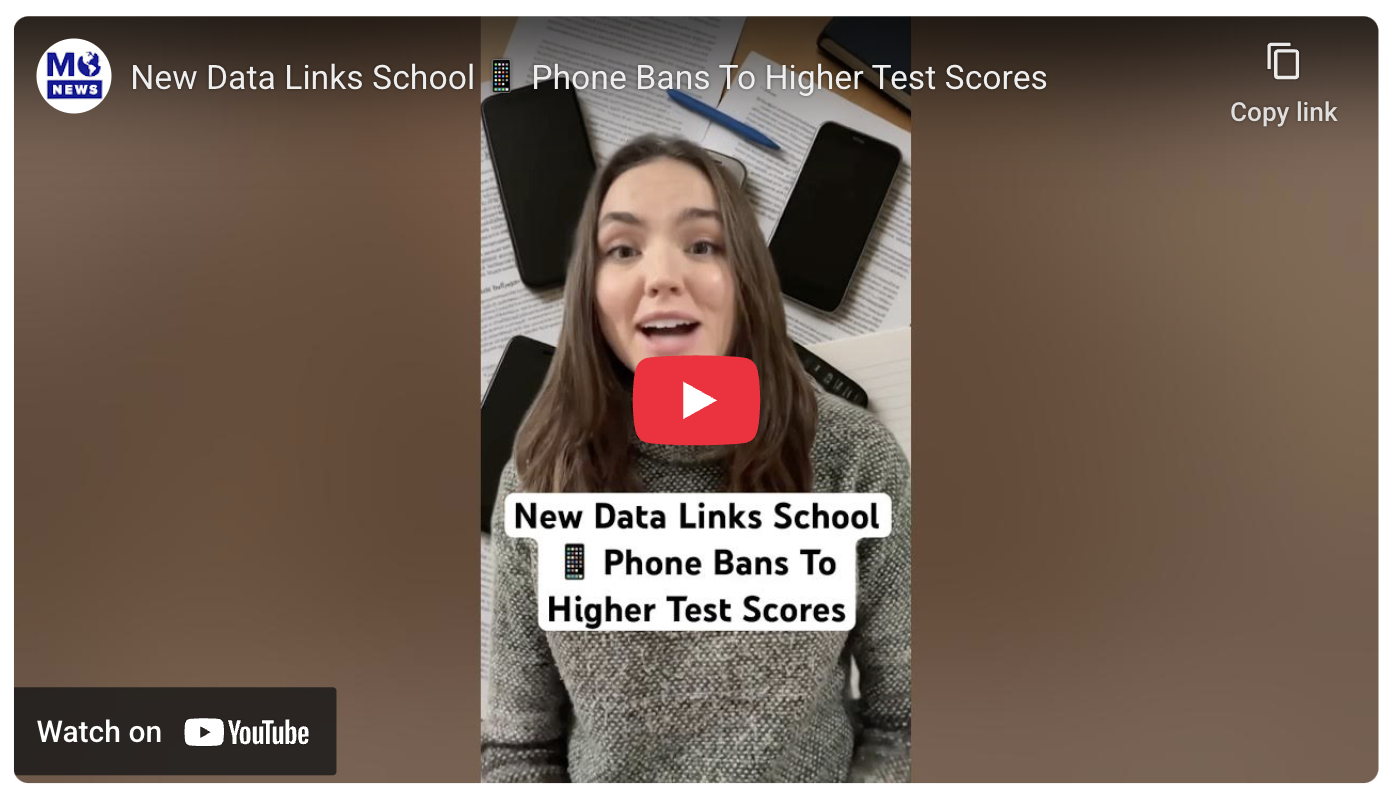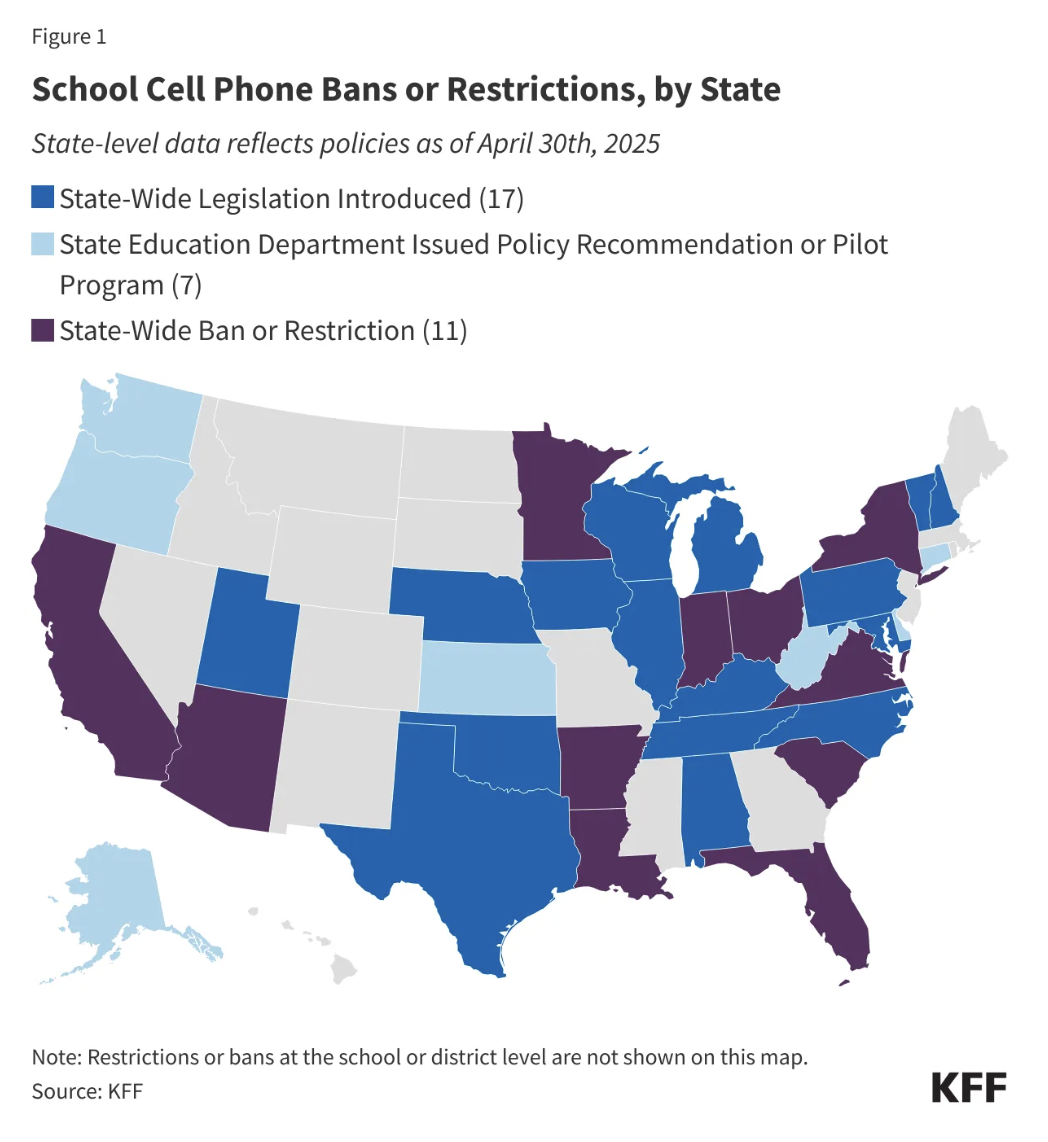What Happens When Schools Ban Phones? The Data Is In
As more school districts across the country are banning students from using smartphones, it begs the question— is it helping? Finally, we are getting some data. A new study found that test scores and attendance rose after the 2023 statewide cellphone ban in Florida.
The study, published by the National Bureau of Economic Research, found that student test scores climbed by 2–3 percent compared to the year before the ban. Researchers also found fewer unexcused absences.
The 2023 law restricted cellphone use during instructional time, leaving school districts to decide how to enforce it. This year, the law went further, banning cellphones from “bell to bell” for Florida elementary and middle school students — when phones are turned off and in the backpack from the first bell until the last bell.
Middle and high schoolers, who are more likely to use phones during class, had the biggest gains.
“It’s not transforming test scores,” said David Figlio, an economics professor at the University of Rochester who helped lead the study. “But we’re observing palpable improvement. We’re observing kids attending school more.”
THE IMPACT, INCLUDING ONE SURPRISING DOWNSIDE (BRIEFLY)
While the Florida research only covered one district, which researchers kept anonymous, it offers early evidence for what educators have long suspected: Fewer phones means more learning.
Beyond academics: This 2025-26 school year, Lee County — one of the state’s largest K–12 districts — adopted the “bell-to-bell” ban for high schoolers, too.
Dr. Nathan Shaker, Chief Academic Officer for Lee County told Mo News that one of the biggest surprises came at lunchtime. ”Kids are talking at lunch, that they’re telling jokes,” he said. “That’s been a very positive feedback outside of even the academics.”
Negative consequences: Suspensions initially doubled the month after the ban took effect as they tried to enforce the ban, but returned to normal levels by the second year.
The study also found disparities: Black students faced more suspensions during the first year of the ban, while white students saw greater academic gains.
For Shaker’s district, he said, “Principles are incredibly creative and innovative in avoiding suspension” — trying to keep students in the classroom.
Phone bans are spreading fast. At least 20 states ban phones during the school day. A new RAND Corp. survey found that two-thirds of principals at K–12 schools said their school had a bell-to-bell phone ban.


